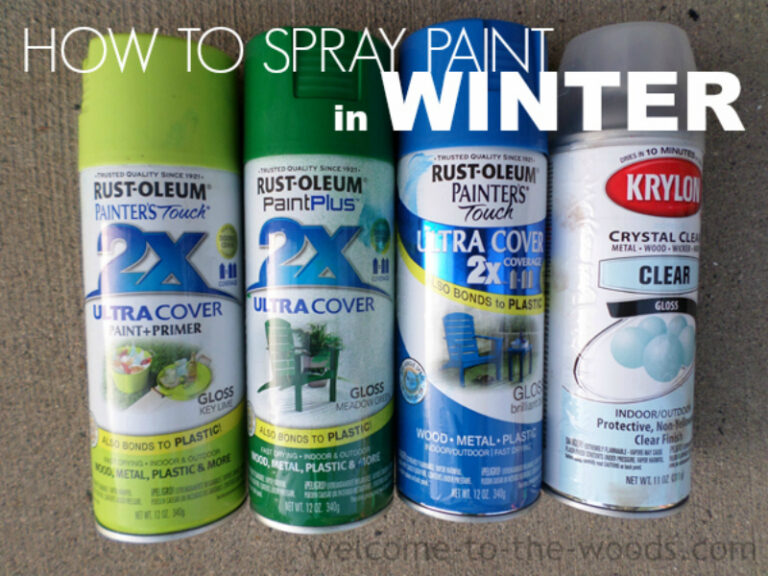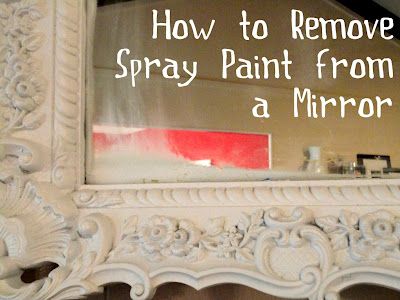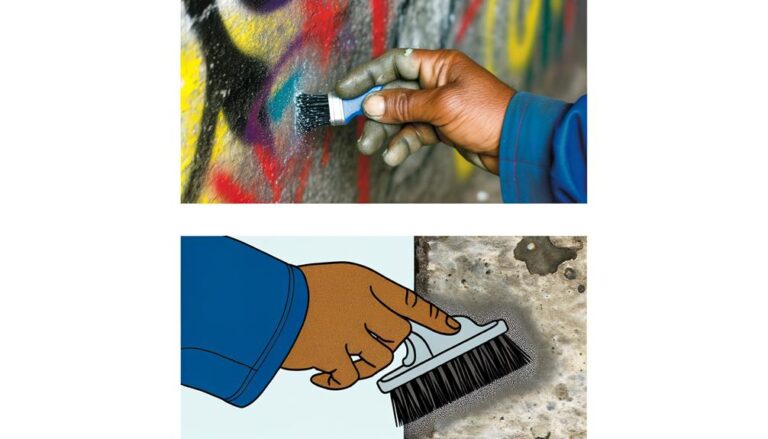Spray paint can be a pain to remove, especially from porous surfaces like brick. But with the right tools and techniques, you can get rid of that unwanted paint in no time.
To start, you’ll need to gather some supplies.
A putty knife, sandpaper, and a wire brush will all come in handy. You’ll also need some kind of solvent – acetone or Paint thinner both work well. And last but not least, you’ll need patience!
- If the paint is still wet, simply wipe it off with a damp cloth
- If the paint is dry, you will need to use a little elbow grease and a stiff brush to scrub it off
- You can also try using a power washer to remove the paint from the bricks
How to Remove Paint from Brick Exterior
If you’re looking to remove paint from your brick exterior, there are a few different methods you can try. First, you can use a power washer with detergent to blasting the paint away. Or, you can use a chemical stripper made specifically for removing paint.
Finally, you can sand the paint off using a hand-held sander or electric sander. Whichever method you choose, be sure to wear protective gear, including gloves and goggles, to avoid getting hurt.
How to Get Spray Paint off Brick Pavers
If you’re looking to get rid of spray paint on your brick pavers, there are a few things you can do. First, try using a putty knife or other sharp object to scrape off as much of the paint as possible. Then, use a wire brush to scrub away any remaining paint.
If those methods don’t work, you can always try using a power washer with some detergent. Just be careful not to damage the bricks themselves!
Vinegar to Remove Paint from Brick
If you’re looking for a way to remove paint from brick, vinegar may be the answer. Vinegar is an acidic substance that can break down paint, making it easy to remove. To use vinegar to remove paint from brick, simply apply it to the affected area with a cloth or brush.
Let it sit for a few minutes before scrubbing at the paint with a stiff brush. Once the paint has been removed, rinse the area with water to neutralize the acidity of the vinegar.
Getting Overspray off Brick
If you’re looking for a way to remove paint overspray from brick, there are a few things you can do. First, try using a putty knife to scrape off as much of the overspray as possible. If that doesn’t work, you can try using a wire brush or sandpaper to gently remove the remaining paint.
You can also use trisodium phosphate (TSP) or white vinegar mixed with water to create a DIY cleaning solution. Just be sure to test any cleaning solutions on an inconspicuous area of the brick first to make sure it won’t damage the surface.
How Do You Get Dried Spray Paint off of Brick?
Assuming you’re asking how to remove spray paint from brick walls, here are a few methods that may work:
1. Use a putty knife or other sharp object to scrape off as much of the paint as possible.
2. Make a paste out of baking soda and water and rub it onto the affected area.
Let it sit for 15-20 minutes before scrubbing with a brush or sponge.
3. Mix together equal parts vinegar and water in a spray bottle and spritz onto the painted area. Wait 10 minutes, then scrub with a brush or sponge until the paint comes off.
What is the Best Way to Remove Graffiti from Brick?
There are a few ways that you can remove graffiti from brick. You can use a power washer, which will blast the graffiti off of the brick. You can also use a chemical stripper, which will break down the paint and allow you to wipe it away.
Does Wd 40 Remove Paint Brick?
In general, WD-40 is not recommended for removing paint from brick. While it may work in some cases, there are safer and more effective options available.
One reason why WD-40 is not ideal for removing paint from brick is that it is a petroleum-based product.
This means that it can actually end up causing more harm than good to the brick surface. In addition, WD-40 is designed to be a lubricant and protectant, not a cleaner or stripper. As such, it’s not going to be as effective at removing paint as products that are specifically designed for this purpose.
If you do decide to use WD-40 to remove paint from brick, be sure to test it in an inconspicuous area first. Apply a small amount ofWD-40 to a clean cloth and rub it onto the surface of the brick. If the paint starts to come off easily, then you can proceed with using WD-40 on the rest of the bricks.
Otherwise, you’ll need to try another method.
When using WD-40 or any other product to remove paint from brick, always take care not to damage the underlying bricks themselves. Work slowly and carefullyto avoid scratching or chipping the bricks.
Can You Power Wash Spray Paint off Brick?
If you’re looking to remove spray paint from brick, power washing is one option that can be effective. This method will require the use of a pressure washer, which can be rented or purchased, along with some careful planning to avoid damaging the brick surface. Here’s what you need to know about using a power washer to remove spray paint from brick:
The first step is to wet down the area around the bricks that you’ll be power washing. This will help keep any overspray from damaging nearby surfaces. Next, set up your pressure washer according to the manufacturer’s instructions and make sure you have all the necessary safety gear, including eye protection.
Now it’s time to start power washing away the paint. Begin by holding the wand about a foot away from the surface of the brick and moving it in a back-and-forth motion. Slowly move closer as needed until you’re able to blast away all of the paint without damaging the bricks themselves.
Once you’re done, let the area dry completely before continuing on with any other projects.
With a little patience and care, you can use a power washer to safely remove spray paint from brick surfaces. Just be sure to take your time and follow all safety precautions while doing so.
Conclusion
If you’re looking for a way to get spray paint off brick, there are a few things you can try. One option is to use a power washer with detergent. Another is to use trisodium phosphate (TSP) and water.
You can also try using a wire brush or sandpaper. If the paint is particularly stubborn, you may need to resort to chemicals like methylene chloride or acetone.


